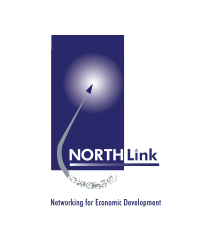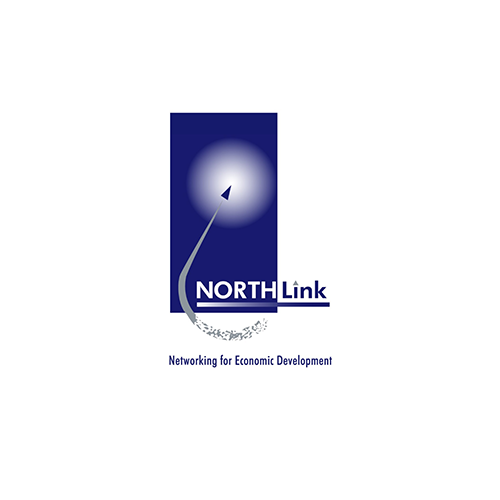Key messages
Northern Horizons 2020 – a jobs and infrastructure plan post COVID-19
- Severely affected region in terms of COVID-19 and social distancing requirements
- Economic confidence and jobs urgently needed
Rapid growth – Melbourne’s North population will be equivalent to Adelaide in 2036
- One in six Victorians live in Melbourne’s North, one in twenty-four Australians
- Infrastructure urgently required
- Northern Horizons identifies both short and long-term infrastructure investment needed to stimulate job-creation in the region.
Melbourne’s North needs urgent investment in infrastructure to drive economic growth and jobs post COVID-19, according to a new report.
“Significant economic disruption has been caused by COVID-19, with Melbourne’s North impacted heavily and around 80,000 jobs lost”, says NORTH Link Executive Director Chris James. “Creating jobs is now the number 1, 2 and 3 issue in the region and economic confidence needs to be restored”.
“The COVID-19 shock comes on top of Melbourne’s North already lagging on several measures of social disadvantage”, says Mr James.
“While a number of the Northern Horizons recommendations from the 2014 and 2016 reports have been fulfilled or funded, including Mernda Rail, the North East Link and the Tullamarine Freeway duplication, the pressures of population growth, which will resume as large-scale overseas and interstate immigration recommences, are also acute and we are still playing catch up”, says Hume City Council Chief Executive Officer and Report Taskforce Chair Domenic Isola on behalf of the Northern Councils Alliance.
“Melbourne is one of the fastest growing cities of its size in the developed world. One in five Melburnians live in the city’s northern region, or around one million people. From 2006 to 2016, the region added almost 200,000 people, which represented a faster growth rate than for the city as whole.
“By 2036, the regional population is projected to be close to 1.5 million (DELWP 2019), similar to Adelaide and half a million more than in the region at present. These are big numbers in terms of both absolute size and growth rate. The size of Melbourne’s north and its rate of population growth rate imply a large and rapidly growing requirement for new/upgraded infrastructure and services, from the fast-growing fringe areas to the densifying inner suburbs.
The report outlines the urgent infrastructure investment needed that is critical to job-creation in the region. Key job-generating projects identified in the report include:
- the $5 billion La Trobe University Redevelopment (est. 20,000 jobs)
- developing an Epping Food Innovation Hub adjacent to the Melbourne Wholesale Fruit Vegetable and Flower Market (est. 10,000 jobs)
- accelerating the Broadmeadows Revitalisation process (est. 1,500 jobs)
- developing the Beveridge Intermodal Freight Terminal (est. 18,800 jobs)
These projects will be largely private sector funded, but Government endorsement and infrastructure support will enable them to come on stream more rapidly, boosting economic confidence and create jobs.
These projects will be enabled by connecting infrastructure such the:
- Suburban Rail Loop (with short-term bus solution connecting La Trobe University to Melbourne Airport and the eastern suburbs)
- Planned Outer Metropolitan Ring Road/E6
- Completion of Northern Regional Trails cycling and walking network
- Key outer north arterial road upgrades in line with population growth
- Smaller projects such as diamond interchanges, railway station redevelopments, rail duplications and electrifications, more frequent bus links that will bring our suburbs and towns to life.
Environment, health and wellbeing and liveability have also been prioritised, with proposals for more open space in the Inner North, enhancements to the Northern Centre for Health and Education Research, a new hospital in the Outer North and an acceleration of energy efficiency and renewable opportunities for business and residents.
The Northern Horizons 2020 Report also finds that Melbourne’s North is also well-positioned to help secure the country’s supply chains via local manufacturing, given the region’s strengths in this space, particularly around food and health, and the education, research and incubator infrastructure that supports manufacturing locally.
“Melbourne’s North has taken the initiative in developing its priorities and is also working closely with Melbourne’s West on a City Deal for Melbourne’s North and West – we now ask Commonwealth and State Governments to join us in helping to build a post-COVID future for our population and workforce”, says Mr Isola.
CONTACT: Chris James, Executive Director – NORTH Link; tel: (0417) 353 650, Melissa Atallah, Executive Officer – Northern Councils Alliance; tel: (0439) 660 993
Background
This report, Building Communities, Connecting People: Northern Horizons 2020, comprises an update of the original Northern Horizons – 50 Year Infrastructure Strategy for Melbourne’s North (Northern Horizons) report which was published in 2014 and the Northern Horizons Update 2016.
The report outlines the latest data and priorities of relevance for transport, social, economic, utilities, environment and economic infrastructure within the geographic region encompassing the seven councils of Melbourne’s North (Banyule City Council, Darebin City Council, Hume City Council, Mitchell Shire Council, Moreland City Council, Nillumbik Shire Council and Whittlesea City Council). Extensive consultation has been undertaken with key stakeholders and organisations across the region together with relevant government representatives to inform the infrastructure prioritisation process.
The Building Communities, Connecting People: Northern Horizons 2020 report is available in two parts. In addition to this document, the Building Communities, Connecting People: Northern Horizons 2020 Evidence Report is available separately and is a much larger and comprehensive document that contains the evidence and data that supports the information and recommendations contained in this report.
Socio-economic and environmental indicators tell us about entrenched disadvantage in the north, as follows:
- obesity – five of the seven northern region LGAs are rated among the worst 12 LGAs out of 32 in Melbourne
- Year 9 literacy – four of the seven Melbourne’s north LGAs rate among the 10 worst in Melbourne
- local job availability – four of the seven Melbourne’s north LGAs rate among the nine worst in Melbourne
- canopy cover – canopy cover in Melbourne’s north is 12.1 per cent, lower than all Melbourne regions other than the west
The 2014 and 2016 Northern Horizons documents were successful advocacy tools, resulting in a number of positive outcomes including:
- commitment to the North East Link project
- construction of Mernda rail line
- completion of Hurstbridge rail line works (Stage 1) – Hurstbridge Stage 2 committed
- commitment to four Community Hospitals
- infrastructure commitments resulting from Broadmeadows Revitalisation Board deliberations and establishment of Broadmeadows Revitalisation Board 4.0.
- commitment by Victorian Government to Northern Roads Upgrade
- construction of O’Herns Road duplication and diamond interchange
- commitment of feasibility funding for Melbourne Market expansion (Epping Food Innovation Hub)
- La Trobe NEIC – commitment of Victorian Government feasibility funding for La Trobe University City of the Future redevelopment
- telecommunications – rollout of the NBN to most of the region
- commitment to business case for Airport Rail Link (federal and state governments)
- commitment of joint federal/state funding to Somerton Freight Terminal
- inclusion of Beveridge Intermodal Freight Terminal as a priority in Plan Melbourne Refresh and ongoing joint business case work with Commonwealth Government
- additional aged care and childcare facilities and additional kindergartens
- Sunbury Rail Upgrade – contracts let
- removal of several level crossings in the north (and a commitment to removing others)
- enhancement of key outer north arterial roads e.g. Sunbury Rd, Yan Yean Rd, Plenty Rd
- Tullamarine Freeway enhancements completed
- Yarra River Crossings – Chandler Highway Bridge construction
- expansion of Northern Hospital at Epping ($160m)
- construction railway station carparks
- commitment to some of the Northern Regional Trails walking and bicycle infrastructure
note: this list is not exhaustive

